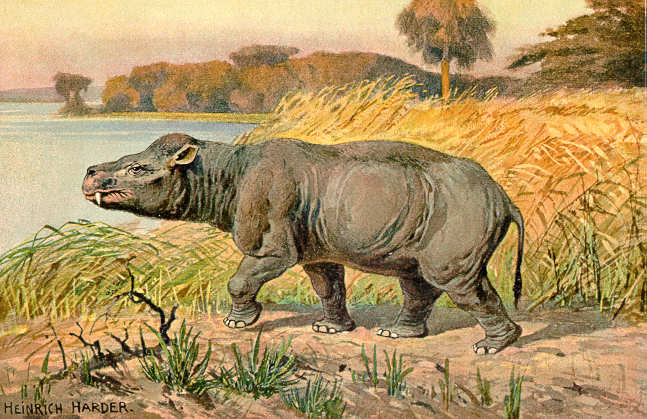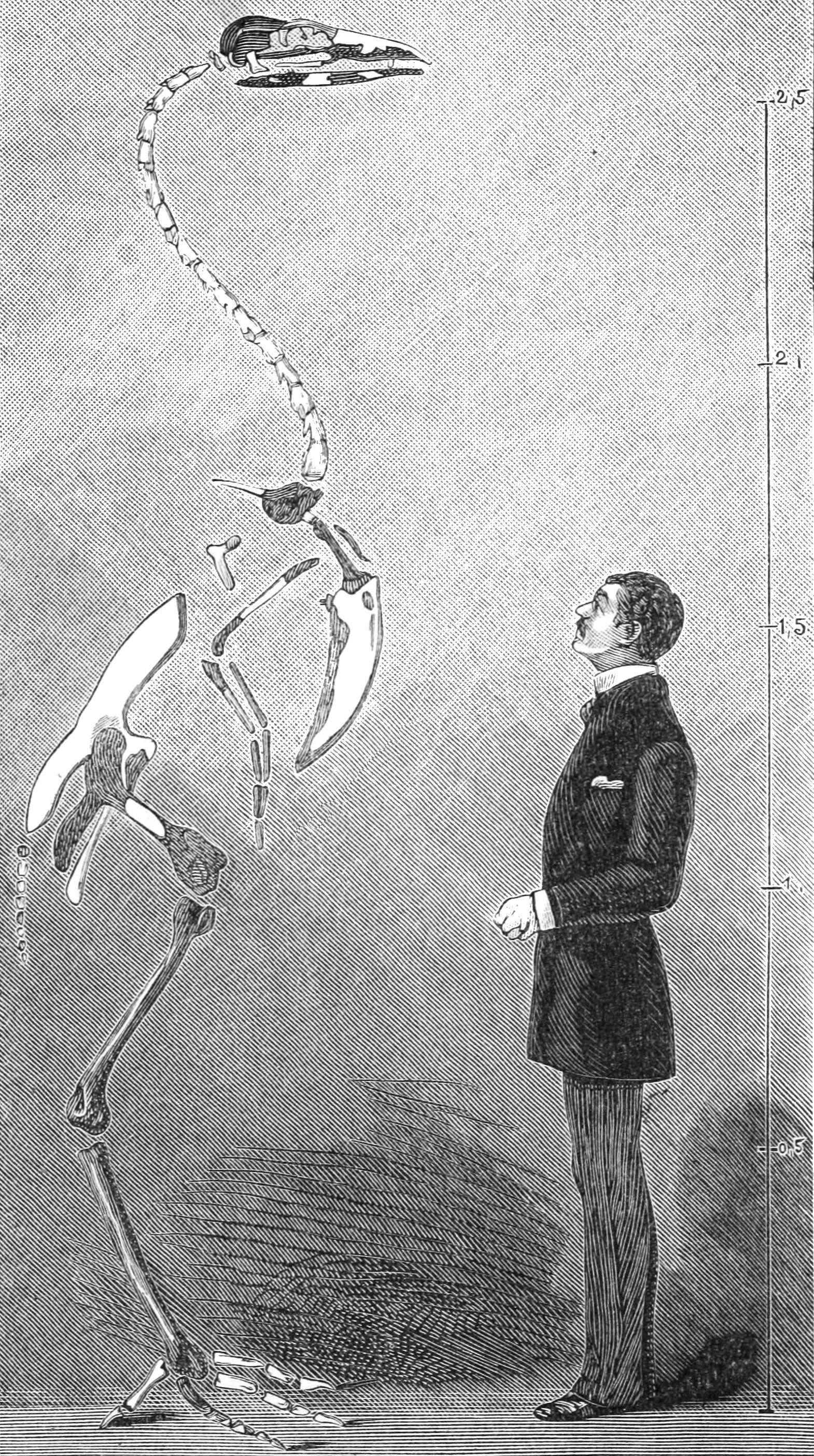|
Margaret Formation
The Margaret Formation is a geologic formation of the Eureka Sound Group in the Sverdrup Basin in Northwest Territories and Nunavut, Canada. The unit belonging to the Eureka Sound Group which crops out at Ellesmere Island preserves fossils dating back to the Early Eocene period, or Wasatchian in the NALMA classification.Margaret Formation at .org The Margaret Formation comprises s, sandy |
Formation (stratigraphy)
A geological formation, or simply formation, is a body of rock having a consistent set of physical characteristics (lithology) that distinguishes it from adjacent bodies of rock, and which occupies a particular position in the layers of rock exposed in a geographical region (the stratigraphic column). It is the fundamental unit of lithostratigraphy, the study of strata or rock layers. A formation must be large enough that it can be mapped at the surface or traced in the subsurface. Formations are otherwise not defined by the thickness of their rock strata, which can vary widely. They are usually, but not universally, tabular in form. They may consist of a single lithology (rock type), or of alternating beds of two or more lithologies, or even a heterogeneous mixture of lithologies, so long as this distinguishes them from adjacent bodies of rock. The concept of a geologic formation goes back to the beginnings of modern scientific geology. The term was used by Abraham Gottlob W ... [...More Info...] [...Related Items...] OR: [Wikipedia] [Google] [Baidu] |
North American Land Mammal Age
The North American land mammal ages (NALMA) establishes a geologic timescale for North American fauna beginning during the Late Cretaceous and continuing through to the present. These periods are referred to as ages or intervals (or stages when referring to the rock strata of that age) and were established using geographic place names where fossil materials were obtained. System The North American land-mammal-age system was formalized in 1941 as a series of provincial land-mammal ages. The system was the standard for correlations in the terrestrial Cenozoic record of North America and was the source for similar time scales dealing with other continents. The system was revised into a formal chronostratigraphic system. This approach is nominally justified by international stratigraphic codes; it holds that first appearances of individual species in particular sections are the only valid basis for naming and defining the land-mammal ages. The basic unit of measure is the first/last ... [...More Info...] [...Related Items...] OR: [Wikipedia] [Google] [Baidu] |
Palaeosinopa NT
''Palaeosinopa'' is an extinct genus of semi-aquatic, non-placental eutherian mammals belonging to the family Pantolestidae Pantolestidae is an extinct family of semi-aquatic, non-placental eutherian mammals. Forming the core of the equally extinct suborder Pantolesta, the pantolestids evolved as a series of increasingly otter-like forms, ranging from the Middle Pal .... Their diet consisted of other semi-aquatic life forms. References {{Taxonbar, from=Q15402591 Cimolestans Eocene mammals Eocene mammals of North America Fossil taxa described in 1901 Prehistoric mammal genera ... [...More Info...] [...Related Items...] OR: [Wikipedia] [Google] [Baidu] |
Coryphodon
''Coryphodon'' (from Greek κορῦφὴ, "point", and ὀδοὺς, "tooth", meaning ''peaked tooth'', referring to "the development of the angles of the ridges into points n the molars") is an extinct genus of pantodonts of the family Coryphodontidae. ''Coryphodon'' was a pantodont, a member of the world's first group of large browsing mammals. It migrated across what is now northern North America, replacing ''Barylambda'', an earlier pantodont. It is regarded as the ancestor of the genus '' Hypercoryphodon'' of Late Eocene Mongolia. ''Coryphodon'' is known from many specimens in North America and considerably fewer in Europe, Mongolia, and China. It is a small to medium-sized coryphodontid who differs from other members of the family in dental characteristics. Description At about at shoulder height and in body length, ''Coryphodon'' is one of the largest-known mammals of its time. The creature was very slow, with long upper limbs and short lower limbs, which were nee ... [...More Info...] [...Related Items...] OR: [Wikipedia] [Google] [Baidu] |
Early Eocene Proxy Ensemble Data From Fossil Localities Showing (a) MAT And (b) MAP Estimates
{{disambiguation, geo ...
Early may refer to: History * The beginning or oldest part of a defined historical period, as opposed to middle or late periods, e.g.: ** Early Christianity ** Early modern Europe Places in the United States * Early, Iowa * Early, Texas * Early Branch, a stream in Missouri * Early County, Georgia Other uses * ''Early'' (Scritti Politti album), 2005 * ''Early'' (A Certain Ratio album), 2002 * Early (name) * Early effect, an effect in transistor physics * Early Records, a record label * the early part of the morning See also * Earley (other) Earley is a town in England. Earley may also refer to: * Earley (surname), a list of people with the surname Earley * Earley (given name), a variant of the given name Earlene *Earley Lake, a lake in Minnesota *Earley parser, an algorithm *Earley a ... [...More Info...] [...Related Items...] OR: [Wikipedia] [Google] [Baidu] |
Crandallite
Crandallite is a calcium aluminium basic phosphate mineral. It has ideal formula . Crandallite was named after Milan L. Crandall, Jr, who worked for Knight Syndicate. This mineral is found in laterite and in alteration products of phosphate rich pegmatite A pegmatite is an igneous rock showing a very coarse texture, with large interlocking crystals usually greater in size than and sometimes greater than . Most pegmatites are composed of quartz, feldspar, and mica, having a similar silicic co ...s. References {{Reflist Phosphate minerals Crandallite group ... [...More Info...] [...Related Items...] OR: [Wikipedia] [Google] [Baidu] |
Swamp
A swamp is a forested wetland.Keddy, P.A. 2010. Wetland Ecology: Principles and Conservation (2nd edition). Cambridge University Press, Cambridge, UK. 497 p. Swamps are considered to be transition zones because both land and water play a role in creating this environment. Swamps vary in size and are located all around the world. The water of a swamp may be fresh water, brackish water, or seawater. Freshwater swamps form along large rivers or lakes where they are critically dependent upon rainwater and seasonal flooding to maintain natural water level fluctuations.Hughes, F.M.R. (ed.). 2003. The Flooded Forest: Guidance for policy makers and river managers in Europe on the restoration of floodplain forests. FLOBAR2, Department of Geography, University of Cambridge, Cambridge, UK. 96 p. Saltwater swamps are found along tropical and subtropical coastlines. Some swamps have hammocks, or dry-land protrusions, covered by aquatic vegetation, or vegetation that tolerates periodic inundatio ... [...More Info...] [...Related Items...] OR: [Wikipedia] [Google] [Baidu] |
Depositional Environment
In geology, depositional environment or sedimentary environment describes the combination of physical, chemical, and biological processes associated with the deposition of a particular type of sediment and, therefore, the rock types that will be formed after lithification, if the sediment is preserved in the rock record. In most cases, the environments associated with particular rock types or associations of rock types can be matched to existing analogues. However, the further back in geological time sediments were deposited, the more likely that direct modern analogues are not available (e.g. banded iron formations). Types of depositional environments Continental * – type of Fluvial deposit. Caused by moving water in a fan shape (Alluvial Fan) and containing mostly impermeable and nonporous sediments well sorted. * . Often in deserts and coastal regions and well sorted, large scale cross-beds * – processes due to moving water, mainly streams. Common sediments are gra ... [...More Info...] [...Related Items...] OR: [Wikipedia] [Google] [Baidu] |
Delta Plain
Delta commonly refers to: * Delta (letter) (Δ or δ), a letter of the Greek alphabet * River delta, at a river mouth * D (NATO phonetic alphabet: "Delta") * Delta Air Lines, US * Delta variant of SARS-CoV-2 that causes COVID-19 Delta may also refer to: Places Canada * Delta, British Columbia ** Delta (electoral district), a federal electoral district ** Delta (provincial electoral district) * Delta, Ontario United States * Mississippi Delta * Delta, Alabama * Delta Junction, Alaska * Delta, Colorado * Delta, Illinois * Delta, Iowa * Delta, Kentucky * Delta, Louisiana * Delta, Missouri * Delta, North Carolina * Delta, Ohio * Delta, Pennsylvania * Sacramento–San Joaquin River Delta, California * Delta, Utah * Delta, Wisconsin, a town * Delta (community), Wisconsin * Delta County (other) Elsewhere * Delta Island, Antarctica * Delta Stream, Antarctica * Delta, Minas Gerais, Brazil * Nile Delta, Egypt * Delta, Thessaloniki, Greece * Delta State, Nigeria * Delta, Ast ... [...More Info...] [...Related Items...] OR: [Wikipedia] [Google] [Baidu] |
Gastornis
''Gastornis'' is an extinct genus of large flightless birds that lived during the mid Paleocene to mid Eocene epochs of the Paleogene period. Fossils have been found in Europe, Asia and North America, with the remains from North America originally assigned to the genus ''Diatryma''. ''Gastornis'' species were very large birds, and have traditionally been considered to be predators of small mammals. However, several lines of evidence, including the lack of hooked claws in known ''Gastornis'' footprints and studies of their beak structure and isotopic signatures of their bones have caused scientists to reinterpret these birds as herbivores that probably fed on tough plant material and seeds. ''Gastornis'' is generally agreed to be related to Galloanserae, the group containing waterfowl and gamebirds. History ''Gastornis'' was first described in 1855 from a fragmentary skeleton. It was named after Gaston Planté, described as a "studious young man full of zeal", who had discov ... [...More Info...] [...Related Items...] OR: [Wikipedia] [Google] [Baidu] |
Presbyornis
''Presbyornis'' is an extinct genus of anseriform bird. It contains two unequivocally accepted species; the well-known ''P. pervetus'' and the much lesser-known ''P. isoni''. ''P. pervetus'' was approximately the size and shape of a goose, but with longer legs; ''P. isoni'', known from a few bones, was much larger, more than swan-sized. Other fossils, more doubtfully assigned to this genus, are also known. Fossils The fossil record of ''P. pervetus'' includes many complete skeletons from Green River Formation sites (Early Eocene), suggesting that the birds nested in colonies and possibly were liable to succumb to botulism, similar to many colony-nesting waterfowl or shorebirds today. ''P. isoni'' is known from the Late Paleocene Aquia Formation (Maryland, 61-62 MYA) humerus (USNM 294116) and a fingerbone (USNM 294117) that were initially described, as well as from the humeri that were initially believed to be from '' Headonornis'' ( BMNH PAL 3686, 5105, 6240). As these are Late ... [...More Info...] [...Related Items...] OR: [Wikipedia] [Google] [Baidu] |





